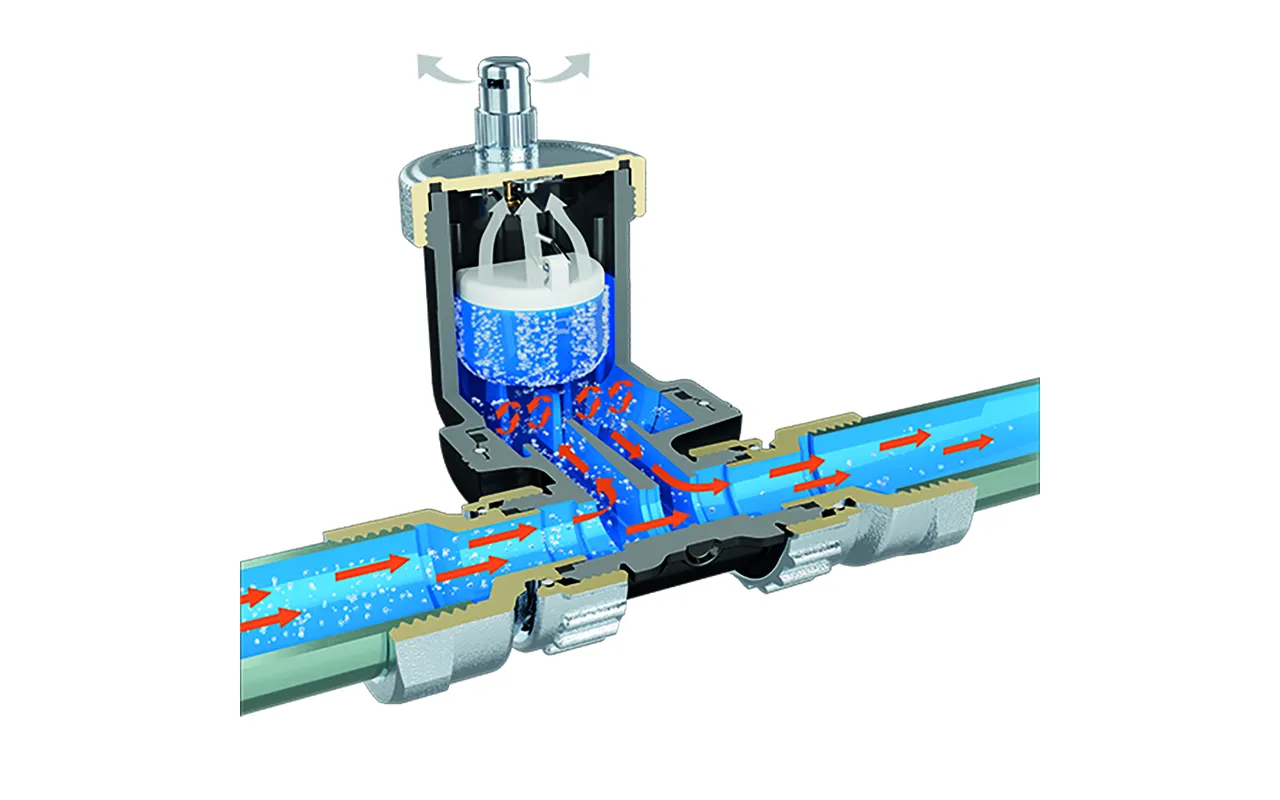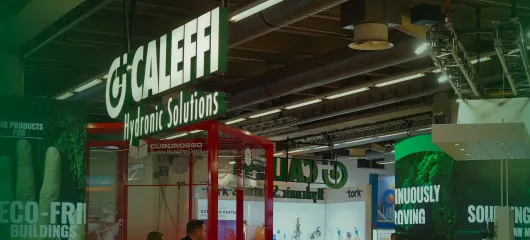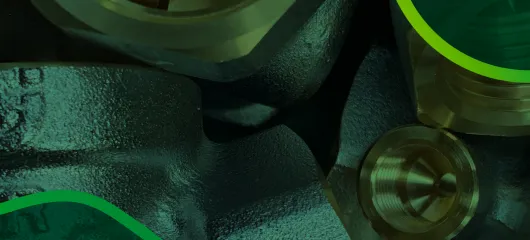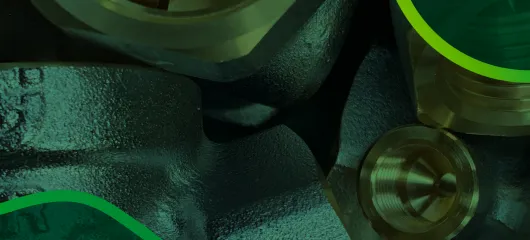DISCALSLIM® - The compact deaeration solution
As you might imagine, conventional deaerators are bulky and it's not always easy to find a convenient location for them, especially for wall-mounted boilers.
The answer to this problem is DISCALSLIM®, the new compact adjustable deaerator by Caleffi.
Compactness and adjustability make it the ideal solution for installation in small spaces, on both vertical and horizontal pipes, provided that the deaeration chamber is always vertically-oriented.
DISCALSLIM® features a special internal profile which diverts part of the water flow into the deaeration chamber. In the chamber, the water is slowed down and broken up by fins in secondary chambers, creating a turbulent flow.
The resulting mini-vortices separate the air bubbles from the flow, collecting them in the bottom of the chamber, where they aggregate to form large bubbles which rise upwards through discharge ducts located at the side of the float.
Due to the air collected in the chamber, the internal float connected to the rocker lowers its position. This opens the automatic vent valve, which exhausts the accumulated gas. DISCALSLIM® also has a hygroscopic safety cap to prevent any leaks.
RECOMMENDATIONS FOR INSTALLATION
The unit must be installed on the delivery pipe, so as to intercept the micro-bubbles before they can damage the system.
CONSTRUCTION DETAILS
DISCALSLIM® has a hygroscopic safety cap with disks of cellulose fibre which expand when in contact with water. This prevents leaks and the resulting damage. The deaeration chamber is accessible for maintenance and cleaning. When the cap is removed, the mechanism that opens the air discharge ducts also comes out.
THE THEORY: WATER TREATMENT
Water treatment plays a fundamental role in keeping climate control systems running efficiently throughout the year. However, one should not think solely of chemical and physical maintenance, but also mechanical maintenance, which requires separating the dirt and air trapped in the fluid running through the system.
Deaeration is essential to keep the system running quietly and preventing the terminals from being out of balance, but most of all to prevent phenomena like corrosion and cavitation, which can greatly reduce the service life of the components and the system itself.
Corrosion due to oxidation is a chemical reaction which occurs in the presence of oxygen and consists in an exchange of iron ions between the vector fluid and the metal components it is in contact with. This reaction leads to perforation of the pipes and other components, increasing the risk of magnetite and impurities forming, which can block the heat exchangers, jam the magnetic rotor of new pumps, and obstruct the smaller valve ducts, thus preventing them from working properly.
Cavitation, on the other hand, is a purely mechanical effect which depends on the continual changes of state in the closed circuit. The heating of the fluid in the heat exchangers separates dissolved air from the water in the form of micro-bubbles of steam. When they get close to the pump impellers, or when they are passing through the adjustment tools, these micro-bubbles undergo another change of state due to the slowing down of the flow and the changing pressure, so that they implode and damage the component.
While taking care when charging the circuit is important, it is not enough to prevent these pockets of air from forming. This is because the air enters the system when it is already dissolved in the water. It is true that installing automatic air vent valves solves the problem of pockets of air forming due to these micro-bubbles. Unfortunately, these components only work properly in the areas of the circuit where the fluid flow is very slow or even stationary, or at the top of risers, where the air in the water has already passed through part of the system and its components.
To remove the air from the system, special devices are needed: deaerators, which are specifically designed to separate the gas from the vector fluid and expel it from the circuit. They have an enlarged cross section which slows down the flow, thus allowing the micro-bubbles to join together and grow until the hydrostatic pressure is enough to separate them from the water. This effect is further enhanced by a spoke-like metal mesh, creating vortices which allow micro-bubbles to be released. Once separated from the fluid, the gas rises to the top of the device, where it is expelled from the system by an automatic vent valve.














